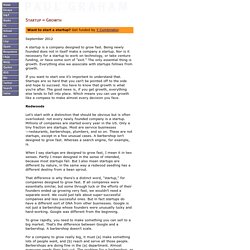

There’s only a few ways to scale user growth, and here’s the list. Scaling growth is hard – there’s only a few ways to do itWhen you study the most successful mobile/web products, you start to see a pattern on how they grow.

Turns out, there’s not too many ways to reach 100s of millions of users or revenue. Instead, products mostly have one or two major growth channels, which they optimize into perfection. These methods are commonplace and predictable. Here are the major channels that successful products use to drive traction – think of them as the moonshots. Paid acquisition. These channels work and scale, because of two reasons: They’re feedback loops. It might seem like it’s best to crack one of these channels right away, and then ride then into glory. New products often only have months, or a year, to live, so these strategies are often not a real option. High-risk, high-reward Attacking one of these scalable channels is high risk but also high reward. This essay by Paul Graham gives us a clue, as he writes about Startups = Growth: Do Things that Don't Scale. July 2013 One of the most common types of advice we give at Y Combinator is to do things that don't scale.

A lot of would-be founders believe that startups either take off or don't. You build something, make it available, and if you've made a better mousetrap, people beat a path to your door as promised. Or they don't, in which case the market must not exist. [1] Actually startups take off because the founders make them take off. Recruit The most common unscalable thing founders have to do at the start is to recruit users manually. Stripe is one of the most successful startups we've funded, and the problem they solved was an urgent one. Startups building things for other startups have a big pool of potential users in the other companies we've funded, and none took better advantage of it than Stripe. There are two reasons founders resist going out and recruiting users individually. The other reason founders ignore this path is that the absolute numbers seem so small at first. Fragile Fire. How to grow a user base. By Richard Nieva On April 12, 2013 Growth hacking is all the rage.

Just yesterday, PayPal acquired not-even-launched-yet startup Iron Pearl to focus its platform of growth hacking tools on expanding the payment service’s user base. But snapping up users is an enigmatic task, right? Well it’s a task that some experts have tried to distill into a more scientific process. At a conference in San Francisco presented by Greylock Partners and Samsung today, a few growth gurus shared some gems about growing a product. Decide what kind of product you’re dealing with Elliot Shmukler, vice president of growth and product at WealthFront, says there are generally two types of products: one where growth is inherently important to functionality, like with a social network.
LinkedIn cofounder Allen Blue described the lean times at LinkedIn early on, when the network was not growing as fast as the company wanted. Word of mouth can be built in Internalize the data and move fast The flip side? A Recipe for Growth: Adding Layers to the Cake // Jeff Jordan. Businesses don’t grow themselves.

One of the most important jobs of a CEO is to aggressively define and pursue a growth agenda for his or her business. Why is this important? Growth typically improves a company’s competitive position and provides increased scale and leverage, and investors clearly value growth. The pursuit of growth continues to be important regardless of the lifecycle of the company. Obviously it’s critical early in a company’s life… or it won’t be a company for long. The first real operating job I had was managing eBay’s U.S. business in mid-2000, which included the ebay.com website.
Lead Bullets. Editor’s note: Ben Horowitz is a partner at Andreessen Horowitz, the former co-founder and CEO of Opsware, and a former Netscape executive.

“Yet our best trained, best educated, best equipped, best prepared troops refuse to fight. As a matter of fact, it’s safe to say that they would rather switch than fight.” —Public Enemy, Fight the Power Early in my tenure as product manager for the web servers at Netscape, we faced a terrible crisis. We just got our hands on Microsoft’s new web server, Internet Information Server (IIS), and benchmarked against our product. I immediately went to work trying to move the playing field and pivot the server product line to something that we could sell for money. As I excitedly reviewed the plan with my engineering counterpart, Bill Turpin, he looked at me as though I was a little kid who had much to learn. As a result of Bill’s words, we focused our engineering team on fixing the performance issues while working the other things in the background.
Startup = Growth. September 2012.

Distribution. Peter Thiel’s CS183: Startup - Class 9 Notes Essay Here is an essay version of my class notes from Class 9 of CS183: Startup.

Errors and omissions are my own.